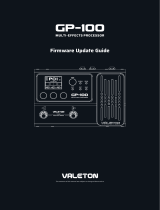
Installation-Related Documents
Overview of Software Installation, Upgrade, and Configuration 1-3
Installation-Related Documents
Table 1-2 lists documents that you may need while you install and configure
Express5800/320Ma software. You can use a Web browser to read these documents
from the Express5800/320Ma ExpressBuilder CD (2 of 2). The documents are installed
from the Express5800/320Ma ExpressBuilder CD (2 of 2), as described by the
following:
• On Express5800/320Ma systems, by the IPL procedure
• On remote management systems, by the RMI procedure
Table 1-2. Documents Used During Installation and Configuration
Document Description
Express5800/320Ma Virtual Technician
Module User’s Guide
Explains how to configure and use a VTM console to
remotely control, monitor, and troubleshoot an
Express5800/320Ma system.
Release Notes: Express5800/320Ma Provides information about a specific release of
Express5800/320Ma software, related hardware, and
documentation updates and errata.
Express5800/320Ma Software Availability
Manager User’s Guide
Explains how to configure and use the
Express5800/320Ma Software Availability Manager
software.
Express5800/320Ma: System
Administrator’s Guide
Describes how to administer and troubleshoot
Express5800/320Ma systems. Explains how to
configure and use the ftServer Management Console
(ftSMC).
Express5800/320Ma: PCI Adapter Guide Describes the PCI adapters that Express5800/320Ma
systems support.
Express5800/320Ma: Site Planning Guide Describes how to prepare a site for the installation of
Express5800/320Ma systems.
Express5800/320Ma: Installation Guide Describes how to install Express5800/320Ma.
Express5800/320Ma: Operation and
Maintenance Guide
Explains how to operate, troubleshoot, and service
Express5800/320Ma.
Express5800/320Ma: Technical
Reference Guide
Provides technical reference information for
Express5800/320Ma systems.
Network Management Card Installation
Manual
A document available from American Power Conversion
(APC) that describes how to set up the UPS.























